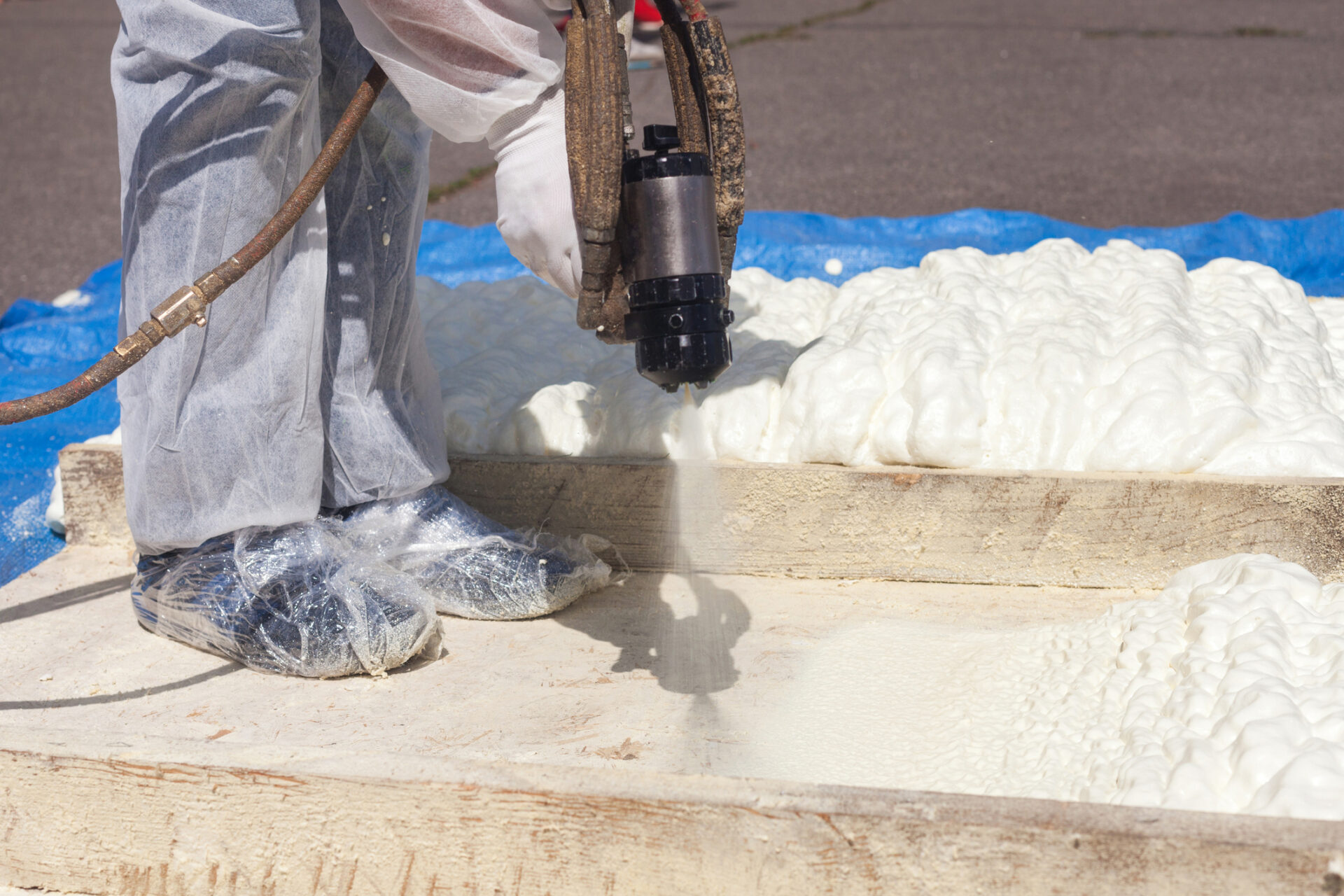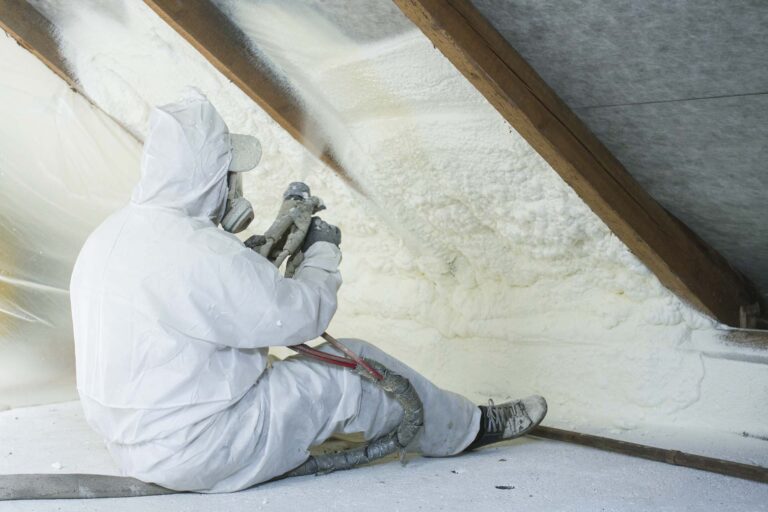
Spray foam can make your home feel cooler in summer, warmer in winter, and quieter year round. It also seals air leaks that drive up energy bills in Texas. If you are comparing open cell and closed cell foams, you are already on the right track. The two materials look similar during installation, yet they perform differently once cured. This guide breaks down the pros, cons, costs, and best use cases so you can choose with confidence.
A quick primer on how spray foam works
Spray foam is applied as a liquid that expands and cures in place. Once set, it creates a continuous air seal that reduces drafts and hot or cold spots. That air seal is the secret to improved comfort and energy savings. Both open cell and closed cell foams deliver that seal, but they differ in density, moisture behavior, and R value per inch.
- Open cell foam: Softer and lighter, typically around R-3.5 to R-4 per inch. It expands more, fills irregular cavities well, and is great for sound dampening.
- Closed cell foam: Denser and more rigid, around R-6 to R-7 per inch. It adds structural rigidity, resists moisture, and can act as a vapor barrier at sufficient thickness.
Open cell foam: strengths, tradeoffs, and where it shines
Open cell is a favorite for many attics and interior walls because it expands generously, seals well, and costs less per inch than closed cell. It also absorbs sound, which is helpful along busy streets or between rooms.
Pros:
- Excellent air sealing with budget friendly coverage
- Outstanding for sound control
- Flexible, so it moves a bit with the home and resists cracking
- Easier to trim and work around electrical and plumbing
Cons:
- Lower R value per inch than closed cell
- Not a vapor barrier, so it is not the right choice for certain damp or below grade areas
- Can absorb water if exposed to bulk moisture, though it dries out when exposure ends
Best uses in Texas:
- Attic rooflines in conditioned attics
- Interior walls where sound control is a priority
- Many above grade wall cavities when paired with proper building wrap and flashing
Closed cell foam: strengths, tradeoffs, and ideal applications
Closed cell delivers the highest R value per inch and adds a tough, moisture resistant layer. It is the go to option where space is tight or moisture exposure is likely.
Pros:
- High R value per inch, great when you need maximum performance in minimal space
- Acts as a vapor barrier at the right thickness
- Adds rigidity to walls and roof decks
- Strong moisture resistance makes it suitable for crawl spaces and rim joists
Cons:
- Higher material cost than open cell
- More rigid, so trimming and wiring adjustments can take longer
- If used everywhere, the cost may outweigh the marginal benefit in some assemblies
Best uses in Texas:
- Crawl spaces, rim joists, and band boards
- Exterior walls that need high R value in limited space
- Metal buildings or pole barns Roof decks that need added moisture control
Comfort impacts you will notice in a Texas home
Both foams seal air leaks, which is where comfort gains begin. In San Antonio’s heat and humidity, that seal helps you in several ways:
- More even temperatures across rooms and levels
- Fewer drafts, especially around penetrations and attic hatches
- Quieter interiors thanks to reduced air paths and, with open cell, added sound absorption
- Reduced load on your AC, which can extend equipment life and help stabilize bills
Is foam insulation good in Texas? Yes. The combination of air sealing and insulation is a strong fit for hot, humid climates. Foam helps keep out outdoor moisture laden air, which in turn helps your AC manage humidity more effectively. Proper ventilation and code compliant fire protection are essential, and a reputable installer will guide you there.
Code notes and safety in Texas
In Texas, attic spray foam typically requires an ignition or thermal barrier depending on where it is installed. Local code officials may also want to verify attic ventilation strategy when moving to a sealed attic approach. In San Antonio, you should expect:
- A continuous air barrier at the roofline for conditioned attics
- Proper ignition barrier coatings or approved coverings in attics and crawl spaces
- Mechanical ventilation plans when needed for sealed attics to maintain healthy indoor air
Work with an experienced local team that knows the codes and inspections. It saves time and avoids costly redos.
Costs you can expect
Actual costs vary by project size, foam type, access, and prep work. As a general guide in Texas:
- Open cell spray foam: often in the range of 1.00 to 1.75 dollars per board foot installed
- Closed cell spray foam: often in the range of 1.75 to 3.50 dollars per board foot installed
A board foot is one square foot at one inch thick. Most roofline applications use several inches of foam, so totals scale with thickness. Whole house projects can qualify for utility rebates, which help offset costs. In San Antonio, CPS Energy rebates are commonly available for qualifying upgrades, and a good contractor will help with the paperwork.
How much should foam insulation cost? For a typical attic roofline in a mid sized home, many homeowners see installed costs from the low thousands to the mid thousands depending on coverage and foam type. A free site visit is the best way to pin down your number.
Common downsides to weigh
What is the downside to foam insulation, and what is the downside of spray foam insulation? You will hear a few concerns. Here is what to know:
- Upfront cost: Foam costs more than basic fiberglass. It often pays back through lower energy bills and comfort gains, but the initial investment is higher.
- Installation quality matters: Poor mixing, incorrect temperatures, or rushing can cause odors, uneven curing, or gaps. Choose a crew with strong local reviews and owner oversight.
- Wrong foam in the wrong place: Using open cell where a vapor barrier is needed, or using closed cell without considering drying paths, can trap moisture. A careful evaluation fixes this.
- Access for future work: Dense, cured foam can make fishing new wires or pipes harder. Planning during installation helps maintain access routes.
Which one where: attics, walls, and crawl spaces
- Attics: Open cell is a great fit for many conditioned attics in San Antonio. It seals well and offers excellent value. Closed cell makes sense if you want the thinnest possible layer with higher R per inch or if moisture control and added rigidity are priorities.
- Exterior walls: Closed cell excels when you need high R value in limited space or extra moisture resistance. Open cell can work in walls when paired with proper exterior water management and interior vapor control.
- Crawl spaces and rim joists: Closed cell wins because it resists moisture and adds strength at vulnerable edges of the building.
- Interior walls and media rooms: Open cell helps with sound control while still sealing air.
Myths and honest answers
- Myth: Spray foam always traps moisture. Reality: Properly designed assemblies manage moisture well. Closed cell controls vapor at the right thickness, and open cell allows drying to one side when used appropriately.
- Myth: Foam is unsafe. Reality: Once cured, code approved foams are inert. Fire barrier requirements and inspections protect your home. Choose certified installers who follow manufacturer specs.
- Myth: Foam ruins your roof. Reality: When installed on the roof deck as part of a sealed attic, foam can actually reduce roof stress by moderating attic temperatures. Ventilation strategy and roofing details must be addressed by a pro.
Is foam insulation worth the money?
For many Texas homes, yes. Foam often delivers measurable energy savings, more stable indoor temps, fewer drafts, and better humidity control. Those benefits show up every season. If your attic is scorching in summer or your rooms swing hot and cold, foam typically provides a noticeable upgrade. The key is a right sized design, the right foam in the right place, and careful installation.
Next steps in San Antonio
If you are comparing options or want a clear, line by line estimate, schedule a quick home visit. A local pro will check your attic, roof deck, walls, and crawl space, then recommend whether open cell, closed cell, or a hybrid approach makes the most sense for your goals and budget. You can also ask about CPS Energy rebates to lower out of pocket costs.
Ready to talk through your project with a trusted local team? Geo-Insulation is a veteran owned, owner led company serving San Antonio. We are happy to walk you through options and provide a fair, competitive quote. For attic specific guidance, visit our attic insulation in San Antonio page for the most common upgrades in our climate. If you are still deciding between materials, our overview of spray foam insulation explains where foam fits and how it compares to other choices.
Summary
- Open cell: great air seal, sound dampening, lower cost per inch, best for many attics and interior walls.
- Closed cell: higher R per inch, moisture resistance, added rigidity, best for crawl spaces, rim joists, metal buildings, and tight wall cavities.
- Texas fit: Foam works very well in our hot, humid climate when designed and installed to code.
- Cost: Open cell generally costs less per board foot than closed cell. Rebates can help, and a site visit will pin down your price.
- Downsides: Higher upfront cost and the need for skilled installation. Design details matter, especially for moisture control.
Have questions or want a quote tailored to your home? Contact Geo-Insulation to schedule a friendly, no pressure consultation. We will help you choose the right foam and get the work done cleanly and safely so your home feels better in every season.

